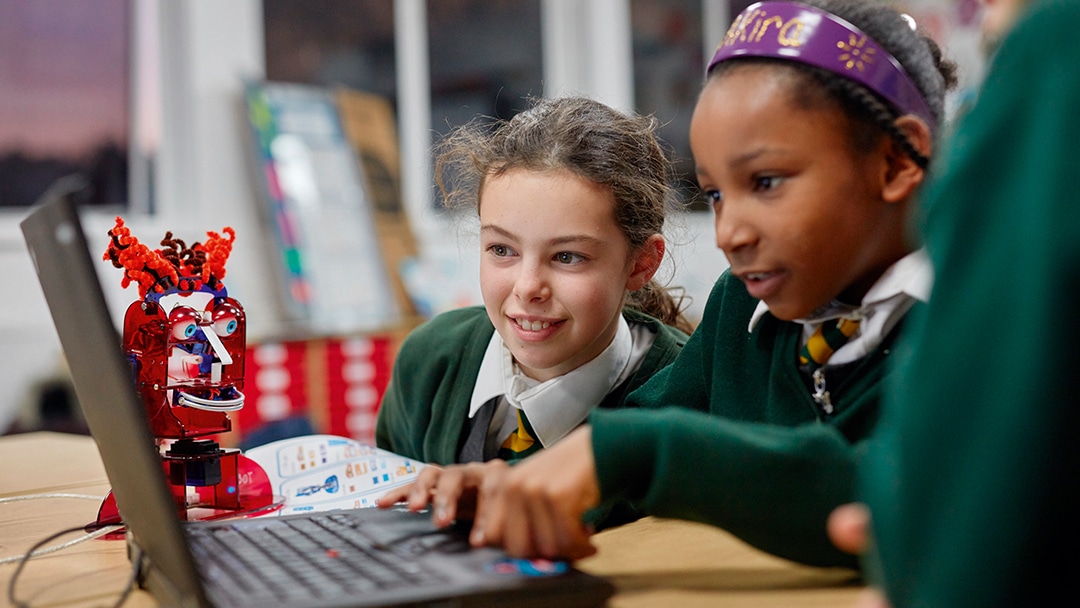Preparing pupils for the fast-paced world of tomorrow is essential. Many curriculum fads come and go over the years but one which will undoubtedly stick around is coding and robotics in the classroom.
The workers of tomorrow’s world will be expected to be highly technology-savvy. The message that is often banded around is ‘jobs for the children you’re teaching today may not have even been imagined yet.’ Yes, programming and coding skills will be vital for the jobs of the future but what about those pupils who won’t go into those roles specifically?
Here we list 4 unexpected benefits that can come with using coding robots in your classroom for STEM curriculum activities.
Leadership and teamwork skills can come from using coding robots
When your pupils are completing programming tasks in groups, you’ll clearly see the interaction and their skillsets begin to shine through. This behaviour within groups is a fantastic environment for sharing, leadership, and teamwork skills to flourish. You’re likely to see the more vocal members become leaders of the task, giving instructions and checking in with the team. The less vocal members are more likely to take over some of the technical tasks. Mixing these jobs up can give children a taste for all aspects of project management, giving them a good foundation when moving forward in their own lives and careers.
Whilst there will be an increase in STEM-based roles in our future world, we know that not every child will go on to a tech, science, or maths-related field. But the skills that come from coding in the classroom are transferable and help a huge variety of future job roles.
Coding robots can teach students to communicate more effectively
There are natural skills learned when working in groups. This includes the power of communication; pupils who can harness this skill and articulate themselves properly will be set up to achieve both academically and vocationally.
When it comes to wider communication skills the Internet is the future. We see constant changes to communication channels every day, with numerous social media options for people to access. Understanding the uses of these channels is important for children, ready for when they transition into making decisions for themselves on how they’d like to spread their messages.
A good way to teach communication via coding robots is to allow the children to access forums such as the Scratch programming discussion forum. When working on new projects, the pupils will be able to access this area, chatting with other likeminded children worldwide, and discussing projects with them. This is a great example to set for collaborative working and communication and demonstrates the positive use of digital communication.

Coding robots can help children realise their true passions
The excitement that comes from using a coding robot (the E.a.R.L coding robot is a great way to introduce coding to key stage 1 pupils), can be clearly evident in any classroom. This excitement can quickly turn to passion when they begin to work through a simple understanding of algorithms.
This basic coding and programming experience can help lay a foundation to pique interest for children in various areas: physics, engineering, mechanics, and even maths. Once the learning becomes deeper with E.a.R.L or other coding robots, you’ll see pupils naturally move into areas where their passions lie.
Coding robots can ignite community and parental involvement
Moving into key stage 2, there is an opportunity to begin sharing the more complex work that pupils have been doing with your coding robot. As there is an obvious generation gap when it comes to coding in school, it’s great to see children sharing their new programming skills with (often baffled) parents!
When it comes to community, there are always opportunities for displaying programming skills at school fairs and in science and engineering competitions. Coding robots are based around innovation and creativity, this is where your pupils can really capture the imagination of wider audiences. There are many communities surrounding robotics, programming, and coding that will bring together passion and innovation for your class. It’s time to reap the benefits of coding in the classroom!
